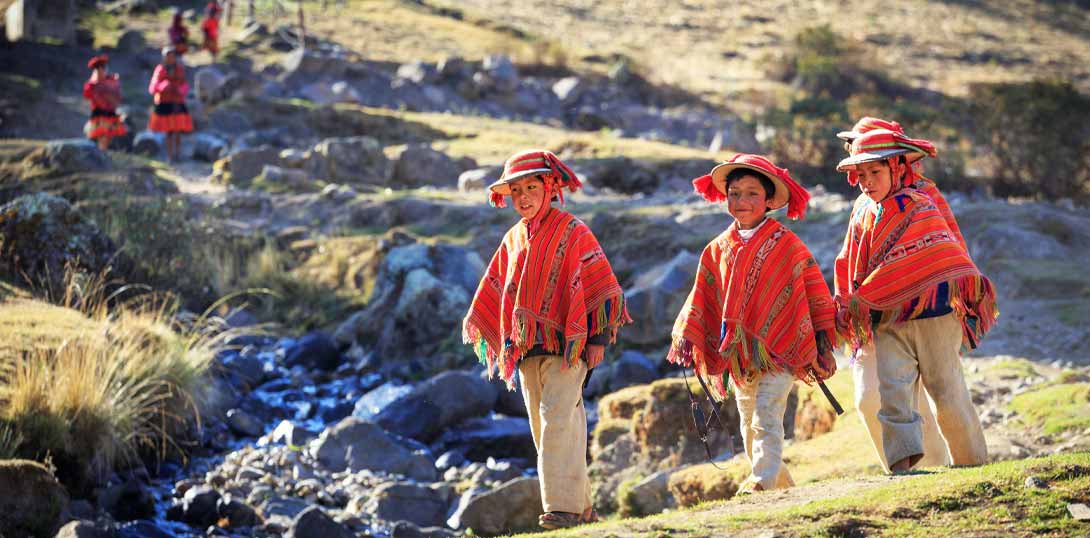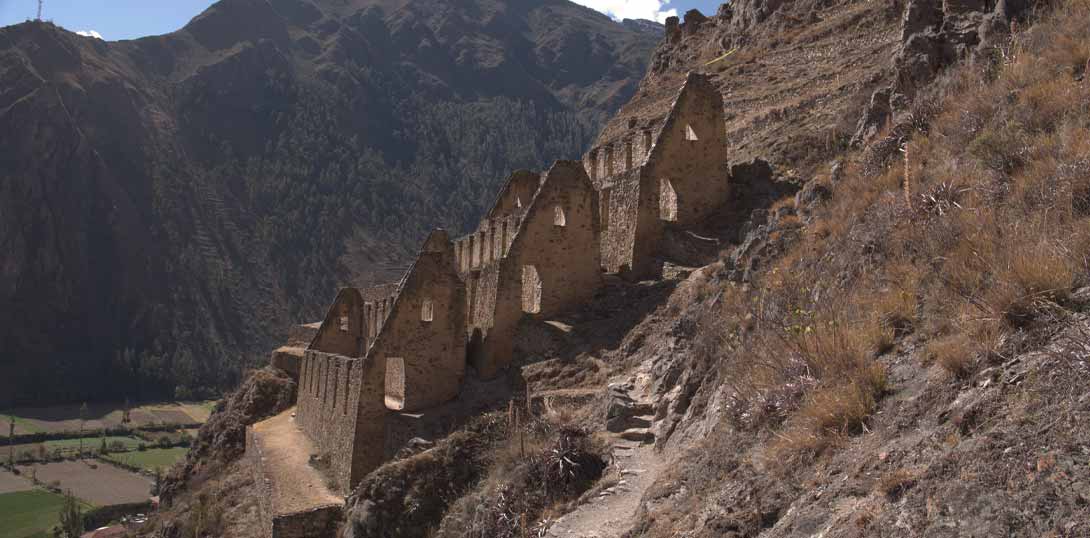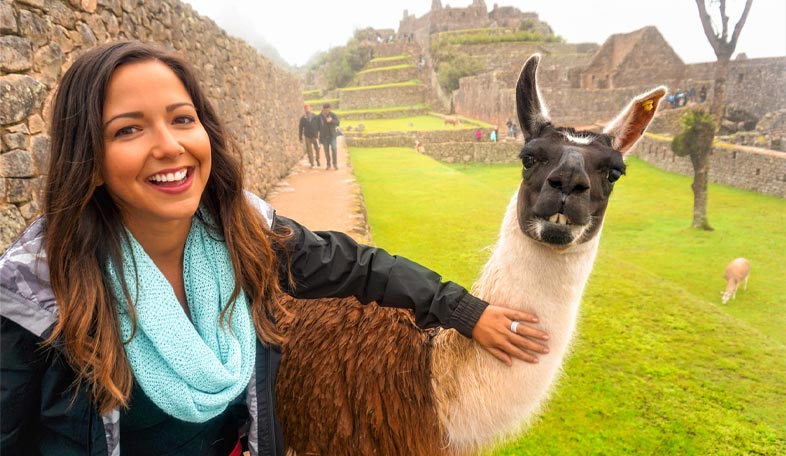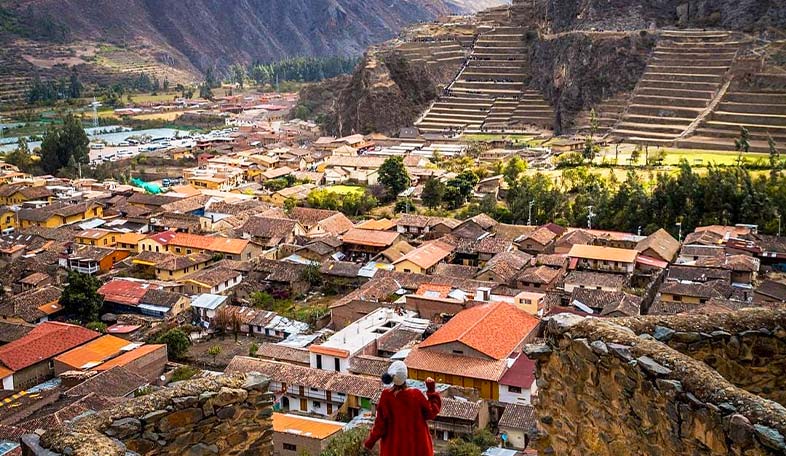One of the most important places of the Inca Empire, just 15km north of Cusco, lies the Sacred Valley (el Valle Sagrado). Filled with the perfect mixture of nature and Andean landscape with the near-perfect Incan architecture, it’s no wonder why it’s called the heart of it all. Main highlights include the Inca citadels of Pisac and Ollantaymbo to name a few.
The valley that stretches from Pisac to Ollantaytambo dates back to the settlement going as far back as 800 B.C. with the Chanapata civilization. From then on, it has had different names throughout history due to different settlers until it’s final conquest made by the Incas in 1420. The surrounding fertile fields made it a prized ground for the Incas who were able to farm different grains, fruits and vegetables.
Apart from the usage of the area for farming fields, royal estates, citadels and country homes were built for the Incan higher class. But one of the more astonishing things was many ceremonial and spiritual built in representations of the constellations. This highlights how important the sky was to the Inca’s, and the religious significance of the cosmology. Many of these can be found at archaeological sites in Pisac, Ollantaytambo, Moray, Maras Salt Ponds, and Chinchero.


One of the must-visit places in all of the Sacred Valley. Ollantaytambo is home to some of the best Inca (and pre-Inca) ruins, with some structures still standing now and being used, which is why the town is known as the “Living Inca City”. If the buildings aren’t enough, head up the hillside and admire the iconic Inca fortress.
This picturesque village is located a bit over 30km from Cusco city and is beloved by travelers who visit. Ancient Inca ruins, such as the biggest Inca cemetery, and Spanish constructions can be found here. If you’re there during the weekend, enjoy the Sunday market that pops up!
The charming town high up in the valleys is where you’ll enjoy stunning scenery. The welcoming indigenous communities just adds to it’s charm.
The Maras Salt Mines are an unbelievable structure of ponds formed on a hillside to produce salt. Thousands of pools are managed by local families who use the same techniques the Incas used over 500 years ago to extract the salt from the water.
Mysterious-looking concentric terraces which were believed to be used as a form of agricultural laboratory. The Moray Ruins can go as deep as 98 feet (30m) and have varying temperatures between the different platforms
There are a few ways to get to Sacred Valley from the Cusco city. We strongly recommend the tour option, as it’s a once-in-a-lifetime experience that you’ll want to be perfect.
The easiest and best way is with a Sacred Valley tour which will allow you to visit all the sites. You have the convenience of getting picked-up from your hotel/hostel, a local tour guide teaching you the history of the Inca and then being dropped back off at your accommodation.
If looking to just go on your own, as the locals would, there are a few more steps. Starting from Cusco, take a colectivo (shared taxi) to Urubamba. Once there you can take a bus or taxi to Ollantaytambo.
It’s not recommended for tourists as the language barrier and confusing roads can be a headache when trying to get back.
Another option is hiring a private taxi driver that takes you to the site, waits for you while you explore the salt ponds and then takes you back to your starting destination. Although it has the benefit of going at your own pace, it is the least popular way as it’s more costly.
At these altitudes, temperatures change quickly so it's a must taking clothing that's easy to take off or put on.
You will do a lot of walking around the Inca citadel so make sure to wear shoes your comfortable with
There is little to no shade in the citadel so it’s important to protect your skin by applying some sunblock
At these altitudes, temperatures change quickly so it's a must taking clothing that's easy to take off or put on.
You will do a lot of walking around the Inca citadel so make sure to wear shoes your comfortable with
There is little to no shade in the citadel so it’s important to protect your skin by applying some sunblock
Yes! You’ll discover picturesque towns, stunning ruins and learn about unique history and cultures that make up the Sacred Valley. It’s also a great warm up to the end point: Machu Picchu.
The Sacred Valley is approximately 60 kilometers (37 miles) in length and is encompassed by many small towns and ruins.
The Sacred Valley is located 35 kilometers (22 miles) from the city of Cusco.

Sacred Valley & Machu Picchu – 2 Day Tour
Mix the beauty of Machu Picchu and the Sacred Valley with this perfect 2-day tour.

Difficulty
Easy

Time
2 Days / 1 Night

Sacred Valley Tour
Visit the Sacred Valley, considered the heart of the Inca Empire

Difficulty
Easy

Time
1 Day